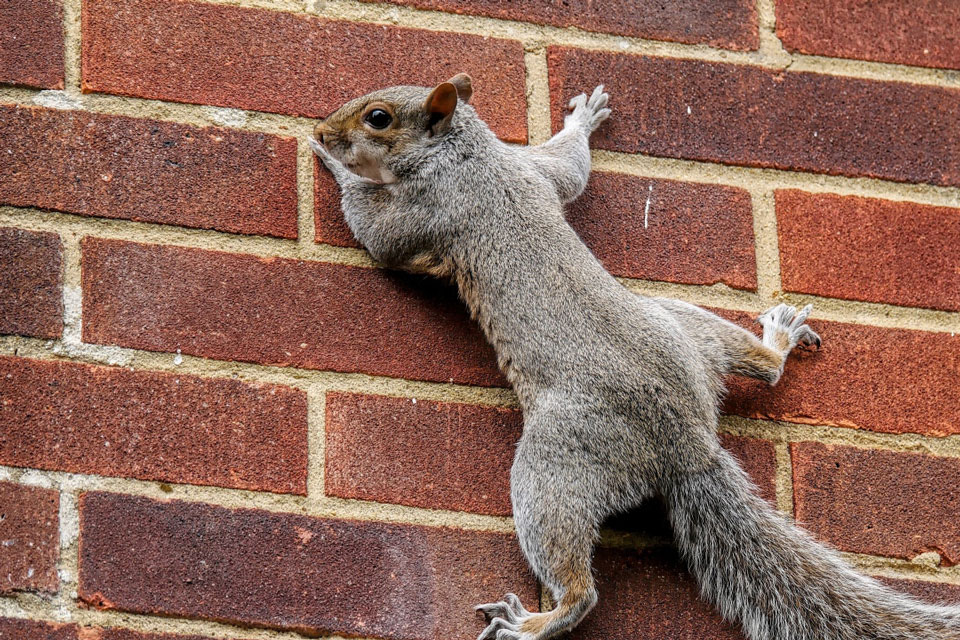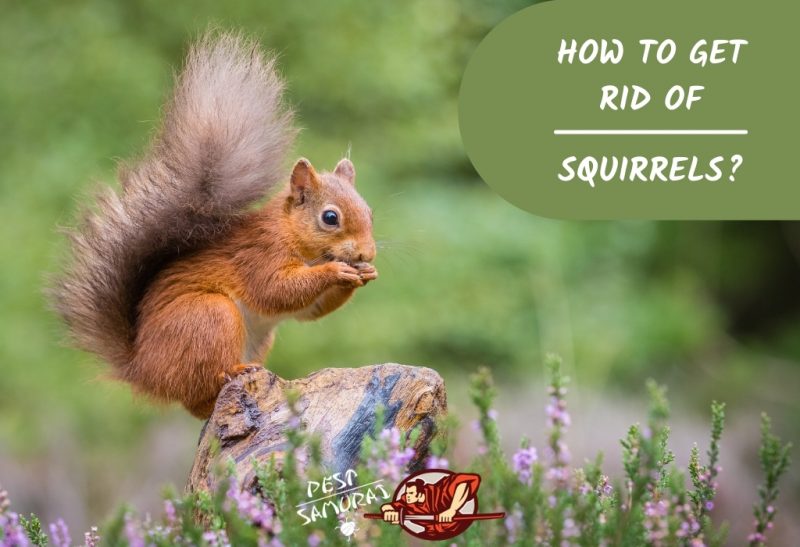In the realm of urban wildlife, squirrels often find themselves on the wrong side of fate, trapped within the confines of our homes. Their persistent scratching, scampering, and nocturnal acrobatics can turn your serene abode into a symphony of chaos. If you’ve found yourself locked in an unwanted game of hide-and-seek with a squirrel in your walls, this comprehensive guide will arm you with the strategies and knowledge needed to regain control of your home.

Image: www.slu.edu
Comprehending the Squirrels’ Motivations
Like all creatures, squirrels are driven by basic needs: shelter, food, and safety. Understanding these motivations is key to comprehending their behavior and devising an effective eviction plan.
Firstly, squirrels seek refuge from the elements. Your walls provide a warm, dry, and draft-free sanctuary from harsh weather conditions, making them an ideal place for nesting.
Secondly, your home may inadvertently be providing a food source. Nuts, seeds, or other food items left in accessible areas can attract squirrels, encouraging them to take up residence within the walls.
Thirdly, squirrels are natural prey animals. They perceive your home as a safe haven from predators such as hawks, owls, or even cats. The walls and insulation offer a sense of protection, making them feel secure.
10 Proven Tactics for Evicting a Squirrel from Your Walls
-
Seal Entry Points: Identify and seal all potential entry points, such as holes or cracks in your roof, siding, or foundation. Use durable materials like caulk, expanding foam, or metal mesh to prevent future breaches.
-
Remove Attractants: Eliminate any potential food sources that may be attracting squirrels to your home. Secure trash cans with tight lids, clean up bird feeders, and store pet food in airtight containers.
-
Introduce Deterrents: Squirrels have a strong aversion to certain scents, such as peppermint, cayenne pepper, or predator urine. Place cotton balls soaked in these scents near possible entry points or suspected nesting areas.
-
Noise and Light Disturbances: Create an unpleasant environment for squirrels by making loud noises or flashing bright lights near their suspected nesting spot. This will disrupt their sleep and foraging patterns, encouraging them to seek a more peaceful abode.
-
Motion-Activated Sprinklers: Motion-activated sprinklers can startle squirrels and deter them from approaching your home. Position them strategically around entry points or areas where you’ve observed squirrel activity.
-
Ammonia-Soaked Rags: Place ammonia-soaked rags in strategic locations within the walls. The pungent smell acts as a potent deterrent, driving squirrels away. Remember to air out the area thoroughly after use.
-
Havahart Trap and Release: If other methods fail, you can humanely trap the squirrel using a live trap. Place the trap in an area where you’ve noticed squirrel activity and bait it with nuts or seeds. Once captured, release the squirrel far away from your home to prevent its return.
-
Exclusion Devices: Exclusion devices, such as one-way doors, can allow the squirrel to exit your home without providing a way back in. Install these devices over identified entry points.
-
Professional Wildlife Removal: If all else fails, consider contacting a professional wildlife removal service. They have the experience and expertise to safely remove the squirrel and address any damages caused by its presence.
-
Exclusion Fencing: For severe infestations, exclusion fencing may be necessary. This involves installing a physical barrier around the perimeter of your home to prevent squirrels from entering.
Additional Considerations
Preventing future squirrel infestations requires a proactive approach. Here are some additional tips to keep your home squirrel-proof:
-
Regularly inspect your roof, siding, and foundation for any potential entry points and seal them promptly.
-
Keep your yard clean and free of fallen nuts, seeds, or other potential food sources.
-
Trim tree branches that may be overhanging your roof, providing easy access to your home.
-
Seal chimneys, vents, and other openings around your home to prevent access.
-
Consider using squirrel-proof bird feeders or placing them in areas inaccessible to squirrels.
-
Educate your neighbors about the importance of securing trash cans and eliminating food sources that may attract squirrels.

Image: pestsamurai.com
How To Get Rid Of A Squirrel In The Wall
Conclusion
Evicting a squirrel from your walls can be a daunting task, but by understanding their motivations and employing a multifaceted approach, you can reclaim your home and restore peace to your living space. Remember to address the underlying issues that attracted the squirrel in the first place to prevent future infestations. Whether you choose a DIY approach or consult a professional, the methods outlined in this guide will empower you to regain control of your home and create a squirrel-free environment.






